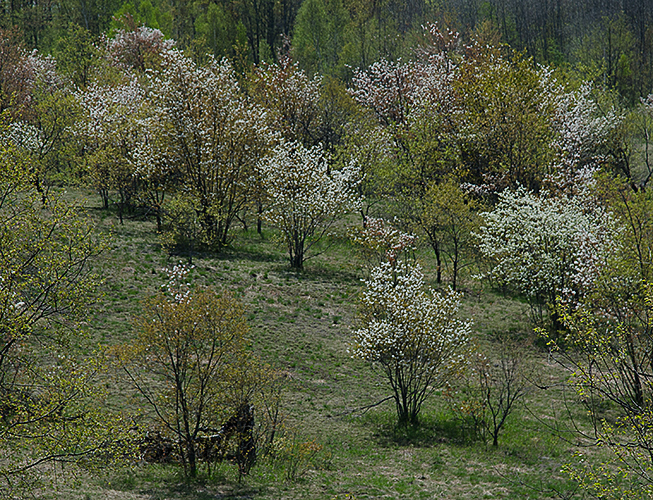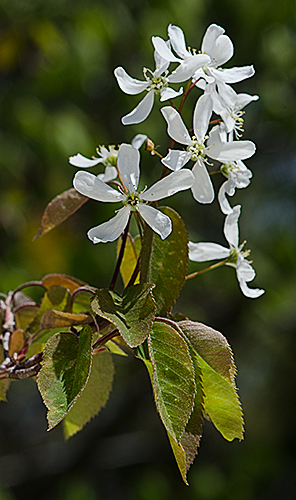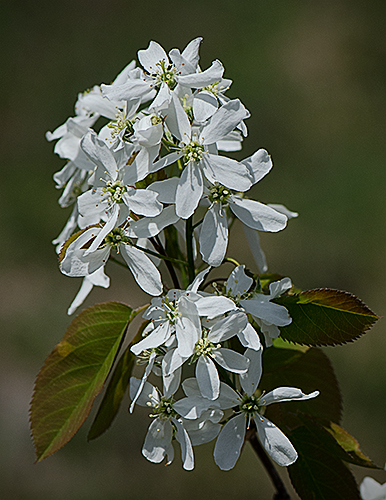I spent last weekend in the area around Grayling, Michigan. Juneberries (Amelanchier sp.) were blooming and the woods sparkled with their soft white flowers. Some of them appeared pink from a distance; however, when seen up close the white flowers had reflected the red of their developing foliage. White flowered Juneberries marked the edges of deciduous woods as their Flowering Dogwood counterparts do in the south.
Six species (or species complexes) are recorded in the Michigan Flora. They are in the Rose Family (Rosaceae) and not closely related to Dogwoods. Their flowering height ranges from one-foot (3dm) to sixty-three feet (19m) in height. They are distinguished by characters of inflorescence shape, leaf venation, leaf toothing, flower shape, petal length, and hairiness of the ovary. Species hybridize and an Ouija board can be as useful as a microscope in determining identification. Ed Voss in the second volume of the Michigan Flora states, “The only virtue Amelanchier has over Crataegus [Hawthorns] and Rubus [Blackberry and Raspberries] is that, by being smaller, it lures us to the hope that it may be more manageable.” If you wish to try identifying Juneberries to species than consult the Michigan Flora website. The “normal” looking plants of each species are distinct but too many plants have not followed the book.
Juneberries are known by a host of common names including, Serviceberry, Shadbush, Shadblow, and Sugarplum. The last name is in reference to the sweet fruit that some species produce. I have eaten fruit off small Juneberry trees in the Upper Peninsula that was as sweet and as juicy as Blueberries.
Look for Juneberries flowering in the north during the next couple of weeks. They are beautiful shrubs in spite of the difficulties in identification.
Copyright 2014 by Donald Drife
Webpage Michigan Nature Guy
Follow MichiganNatureGuy on Facebook



